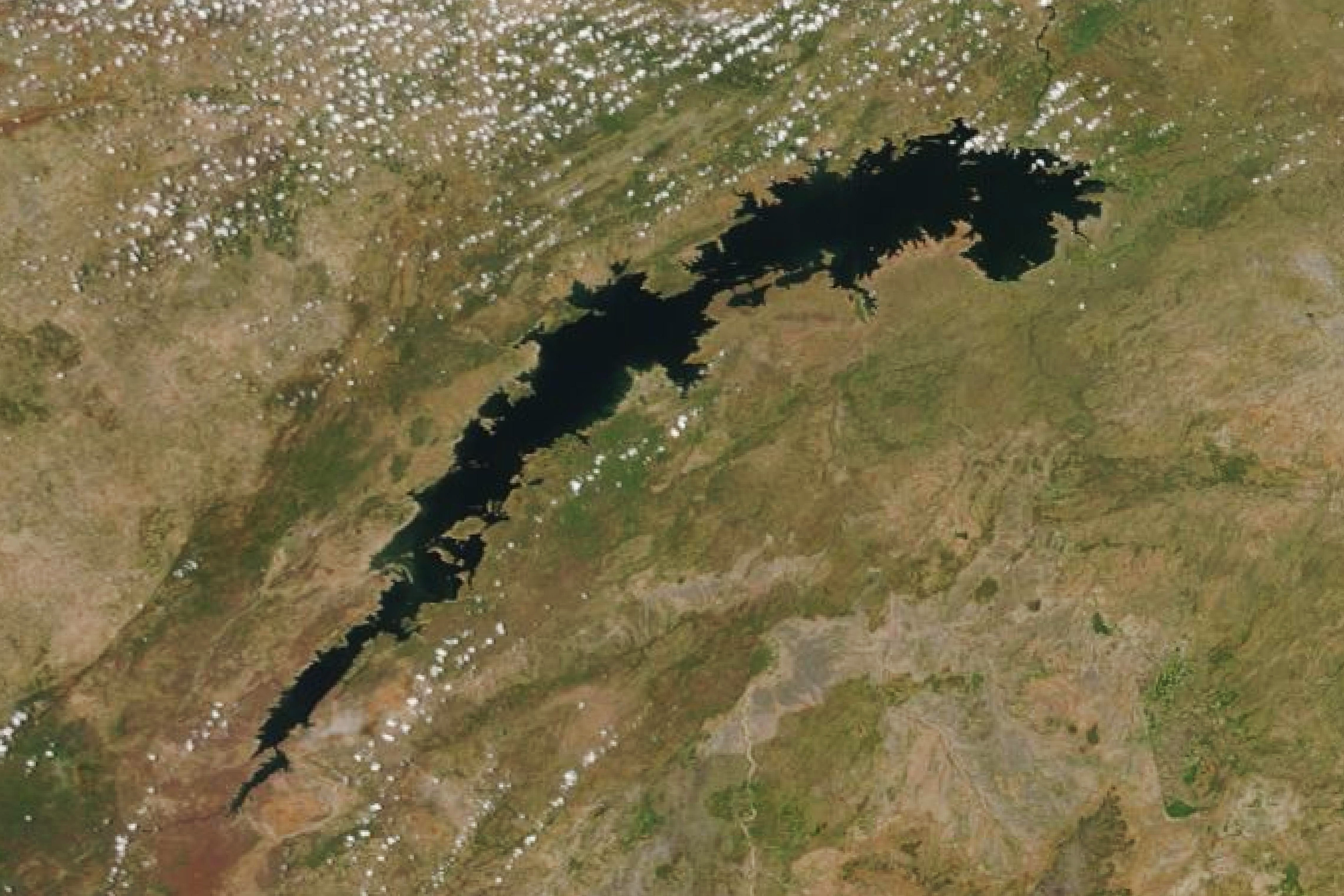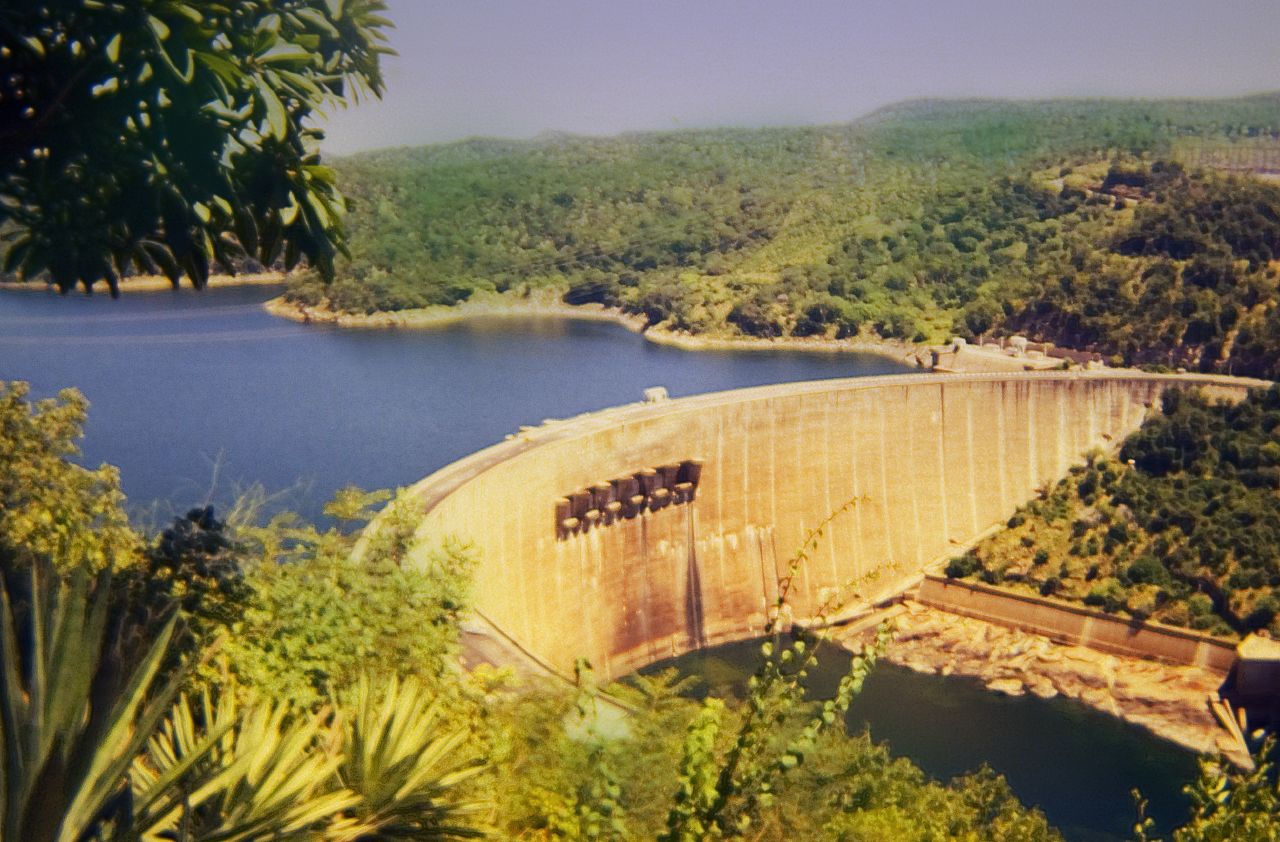[:ja]NASAの地球観測衛星TerraとAquaが撮影したザンビアとジンバブエにまたがるカリバ湖です。今世紀最悪とされる干ばつにより、カリバ湖はこの1年で大幅に減少、地域の穀物の収穫量も30%減少しています。

カリバ湖は、北東から南西方向に長さ約220km、幅約40kmと細長く伸びており、体積では世界最大、面積でも世界で4番目に大きな人造湖です。ザンベジ川のおよそ中間に位置し、インド洋に注ぐ河口から約1,300km上った所にあります。カリバ湖は、1958年から1963年にかけて完成した湖の北東端に位置するカリバダムによってせき止められています。カリバダムが完成しカリバ湖ができる前、もともとあった植物たちは燃やされ、湖底となる土地に厚い肥沃土の層を形成しました。この結果、カリバ湖の自然環境は恵まれたものになっている。多くの種類の魚類が湖に放流され、特にタンガニーカ湖からドジョウ科のカペンタが湖に放されました。他にも、カリバ湖の住民はナイルワニやカバを湖に導入しました。
地上の様子はこちらです。

参考文献: Drought Threatens Millions in Southern Africa (NASA EArth Observatory)
地球俯瞰画像を見る: LiVEARTH
[Earthview Wonders] No.923: Lake Kariba🇿🇲🇿🇼
NASA’s Terra and Aqua satellite captured Lake Kariba along the border between Zambia and Zimbabwe. Due to the worst drought in a century, diminished lake caused decreased grain production by 30% accross the region.

Lake Kariba is the world’s largest man-made lake and reservoir by volume which lies 1,300km upstream from the Indian Ocean. Lake Kariba was filled between 1958 and 1963 following the completion of the Kariba Dam at its northeastern end, flooding the Kariba Gorge on the Zambezi River. During the filling up phase of the lake, the water was high in nutrients coming from decomposing, inundated vegetation, creating a thick layer of fertile soil on land that became the lake bed. As a result, the ecology of Lake Kariba is vibrant. A number of fish species have been introduced to the lake, notably the sardine-like kapenta (transported from Lake Tanganyika), which now supports a thriving commercial fishery. Other inhabitants of Lake Kariba include Nile crocodiles and hippopotami.
The local scenery on the ground is as follows.

Reference: Drought Threatens Millions in Southern Africa (NASA EArth Observatory)
See earthview photo gallery: LiVEARTH[:en][Earthview Wonders] No.923: Lake Kariba🇿🇲🇿🇼
NASA’s Terra and Aqua satellite captured Lake Kariba along the border between Zambia and Zimbabwe. Due to the worst drought in a century, diminished lake caused decreased grain production by 30% accross the region.

Lake Kariba is the world’s largest man-made lake and reservoir by volume which lies 1,300km upstream from the Indian Ocean. Lake Kariba was filled between 1958 and 1963 following the completion of the Kariba Dam at its northeastern end, flooding the Kariba Gorge on the Zambezi River. During the filling up phase of the lake, the water was high in nutrients coming from decomposing, inundated vegetation, creating a thick layer of fertile soil on land that became the lake bed. As a result, the ecology of Lake Kariba is vibrant. A number of fish species have been introduced to the lake, notably the sardine-like kapenta (transported from Lake Tanganyika), which now supports a thriving commercial fishery. Other inhabitants of Lake Kariba include Nile crocodiles and hippopotami.
The local scenery on the ground is as follows.

Reference: Drought Threatens Millions in Southern Africa (NASA EArth Observatory)
See earthview photo gallery: LiVEARTH[:]